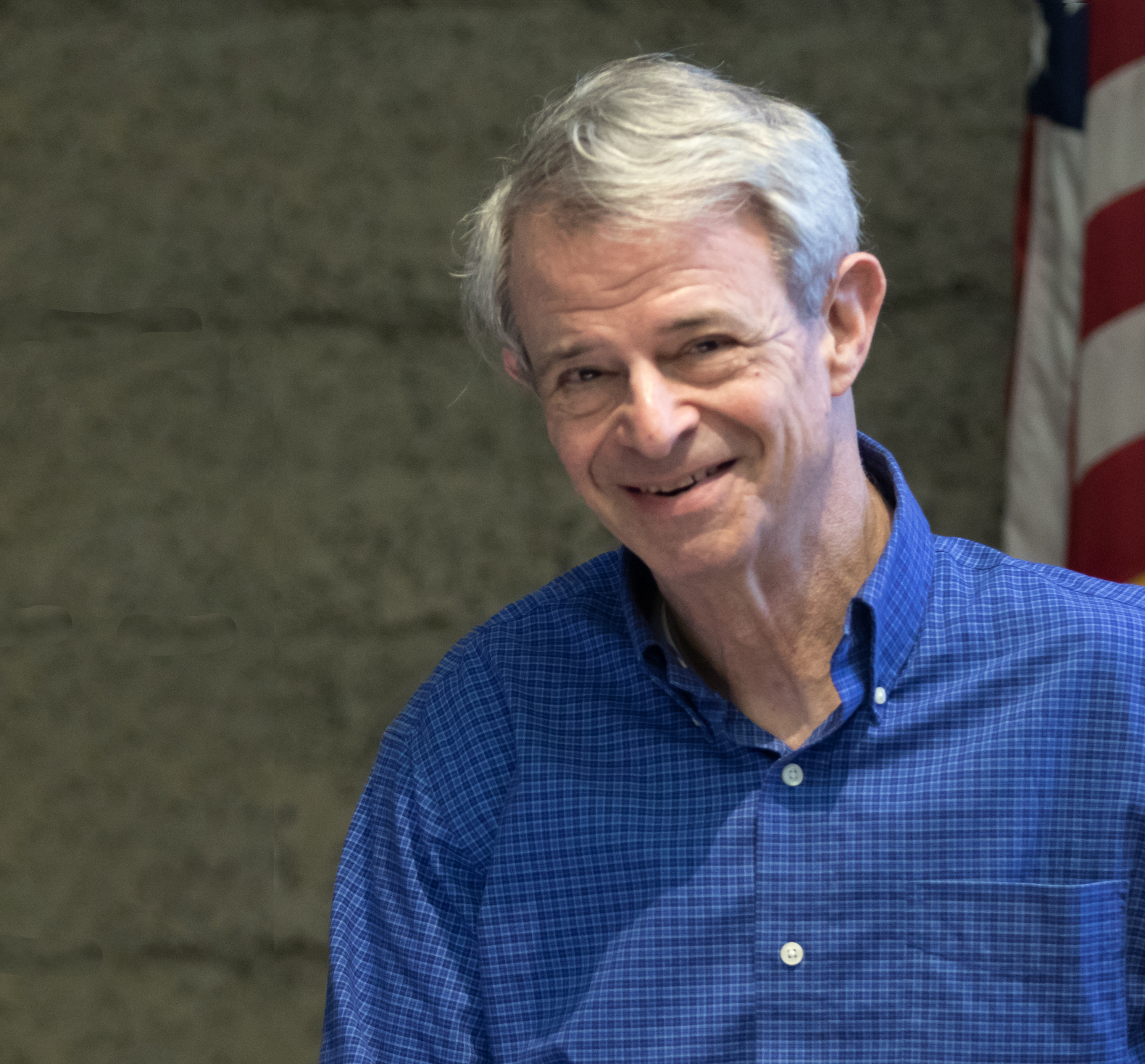Designing for Large Format
Dan Wilson
Irvine, California
Roland DGA Corporation
15363 Barranca Parkway
Irvine, California 92618
July 21, 2016
7:00 – 9:30 p.m.
The logo on a business card might be the same as the logo on a billboard, but how it’s presented is completely different. Learn the secrets and techniques of designing for large format at this special presentation by Dan Wilson, creative director at Roland DGA Corporation and held on the Roland campus in Irvine, California.
You will learn all about wide-format graphics, including best practices for viewing distances, locations, materials, finishing, composition, color management, and how to design for output and installation.
Following the presentation, Dan will lead a tour of the Roland gallery and production center to see first-hand, hundreds of creative possibilities—from movie sets and car wraps to unique signs and apparel—for you to consider in your own work.
Location and Parking
This special on-site presentation is a joint meeting of the Los Angeles InDesign User Group and Society for Experiential Graphic Design. SEGD LA is an association of people who create content-rich, emotionally compelling, experiential spaces for a wide range of environments, from hospitals and transit hubs to museums and educational campuses. Their work creates a sense of place, helps people find their way, communicates important information, and fuels a dialogue between users and the spaces they inhabit. They develop static and digital wayfinding systems, signage, environmental graphics, exhibition content, multimedia installations, public art, user interfaces, and branded/corporate environments. Members of SEGD LA research, plan, design, and build a diverse range of visual communications and information systems for the built environment. www.segd.org
Meeting Notes
By Alvin Takamori
On July 21, the Los Angeles InDesign User Group welcomed back Dan Wilson, the Creative Director of Roland DGA Corp. as a guest presenter. Actually, this time he welcomed us, as the meeting took place in the offices where he works. This included the added perk of snacks and drinks provided by the host.
Back in March, Dan discussed various considerations for pricing graphic design. for this meeting Dan's talk explained the unique requirements of designing for large format output. The talk began with a humorous video of client interactions that illustrated how clients often didn't understand the printing process.
So, to insure we don't wind up being one of those clients, Dan gave us a rundown on some things to think about while designing for large format printing.
The first thing to think about is how the image will be seen. If it's a large outdoor sign seen from the road you might have less than a minute to communicate your message. An image at a trade show booth will be seen for a much longer time. This also points out the importance of viewing distance for determining how much detail to include in a graphic.
Before designing any graphics, it's important to survey the environment where it's going to be seen. What are the lighting conditions? Can you control them? Are there obstructions to viewing the graphic? How does traffic flow in the area? This doesn't just apply to streets, but possibly foot traffic, maybe through aisles. What is the material or surface the graphic is being placed on?
After looking at the surroundings, you can think about the things that are competing for a viewer's attention and how you can make your image stand out. Sometimes a simple graphic might be the thing that gets noticed.
Next is the design process. A unique possibility for large graphics is to piece several images together. When designing for something like this, it could be important to think about where the seams would be and possible ways to hide them.
Dan mentioned color control, but that's important for any size graphics. You want to profile the output device and the material that is being printed on. if you use gradients, try to use only two colors. Transitions from one color to another are much cleaner than gradations involving three or more colors.
For large images, it's usually better to have higher contrast. It's easier to read and has stronger visual impact. This fits the goal of most large images that aim to deliver a message quickly. The composition can also help to achieve this. Design with a clear focal point and think about the negative spaces.
To determine the required type sizes for large graphics, consult signage publications. For example, on a highway, 12" letters can be read from a maximum distance of 525 feet. The optimal viewing distance is 120 feet.
When considering photography for large format output, Dan recommended high quality images with low resolution as being preferred to a bad, high resolution photo. When you are printing, if you have a choice, he offered these basic guidelines. A photo seen up close should be printed with at least 150 dots per inch. A photo in a large 100 foot room needs about 120 dpi. A photo seen from far away can be output around 30 to 60 dpi.
Some printing options apply to any size output. What type of ink to use, whether or not to apply a clear UV coating, spot varnishing, embossing, how to trim the piece, etc.
The raster image processing software is another consideration. The choice can affect the speed of output. It is also possible to use the RIP to adjust colors.
Finally, how a large graphic is going to be installed is important to think about.
A highlight of the meeting was a tour of the printers and showrooms at Roland DGA. Led by employees, attendees were divided into two groups to go on the tour. In the printing room, we saw milling and engraving machines that are useful for creating signage that meet compliance requirements for the Americans with Disabilities Act (ADA). They also had a 3-D printer. An ultraviolet flatbed printer could be setup to print on objects like iPhone cases and bottles. A larger flatbed with 6 inches of clearance printed on pieces of wood.
There was an inkjet printer that could use metallic inks and a sublimation printer that could print on fabrics for apparel or upholstery. Printing could also be done directly on metal or plastic polycarbonate.
In a very colorful showroom we saw that not only can you create graphic wraps for cars, but you could wrap appliances, sinks, musical instruments and more. There were examples of floor to ceiling graphics covering walls. Plus, the floor tiles, columns and doors could be covered too. Some of this was used in movie productions. Painting reproductions can have texture. There were examples of fabric printed shirts and upholstery for chairs. There were also numerous printed objects made of glass, plastic and metal like awards, bottles and signage.
The presentation touched on some general considerations for large format printing. Dan's talk only provided a starting point, and any details will have to be worked out with each individual project. If nothing else, after this you may come away with the outline of the thought process needed for a large format graphic project and a greater awareness of some of the possibilities for printed graphics that go beyond a standard sheet of paper. If you attended this meeting, you also came away with a free journal, thanks to the people at Roland DGA Corp.
Refreshments (and More!)
In addition to providing the presenter, providing the meeting space, and providing a tour of the Roland Gallery, Roland is also providing sandwiches and drinks, PLUS a special giveaway. How cool is that?
Farthest Attendee
The bona fide LAIDUG member who travels the farthest specifically to attend the meeting will receive her or his choice of any one deal at MightyDeals up to $50.00. Mighty Deals offers fonts, templates, apps, e-books, etc. You need to prove to us that you traveled farthest to attend this meeting. Having recently moved to the area from somewhere else won't cut it. Be prepared to show us indication of your current residence—perhaps a driver's license or a utility bill. Decision of the administrators of the Los Angeles InDesign User Group is final. Winner — John Danielson
Raffles
LAIDUG is supported by raffles of donated prizes. No one is required to participate in the raffles. Raffle tickets are: 1 for $3, 2 for $5, 5 for $10, 11 for $20, 24 for $40, 32 for $50 and 65 for $100. All major credit cards are accepted.
Raffle Prizes and Winners
eDocker CREATE! 6 month subscription. Value $774.00 Winner — Angela De Leon
Stock Layouts. Full access to Stock Layout template library. 3 month subscription. Value $299.00 Winner — Angela De Leon
AcademyX. Credit toward any class. Value $250.00 Winner — Bing Wong
Markzware. Any single product. 12 month subscription. Value $199.00 Winner — Joni Casimiro
Expo Creative Asset Manager for Mac from Insider Software. Value $149.00 Winner — Bing Wong
Font Agent Pro 6 from Insider Software. Value $99.95 Winner — Azenith Gueco
InMotion Hosting. Web hosting and free domain. Value $90.00 Winner — Enrique B. May
DTP Tools Cloud for InDesign. 6 month subscription. $77.40 Winner — Kelly Taylor
TypeDNA. Font management software. Value $49.00 Winner — Angela De Leon
Adobe Stock. 15 image licenses. $44.00 Winner — Mark Bartosik
InDesign Magazine. 6 month subscription. Value $30.00 Winner — Tamara Masion
Pluralsight. 1 month subscription. Value $29.00 (two raffles) Winners — Angela De Leon, Kris Helmick
LA Web Professionals Group meeting tickets. Value $7.99 (four raffles) Winners — Devin Davidson, Angela De Leon, Bing Wong
About the Presenter

Dan Wilson
Dan Wilson is creative director at Roland DGA Corporation, a leading manufacturer of digital imaging technologies ranging from wide-format printers and cutters to 3D printing and milling machines. Dan is responsible for overseeing Roland’s marketing and branding communications, and works with a full in-house creative team as well as external freelancers and agencies to deliver a high quantity and quality of work.


